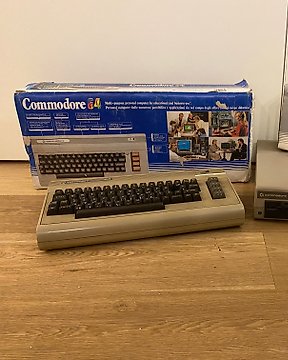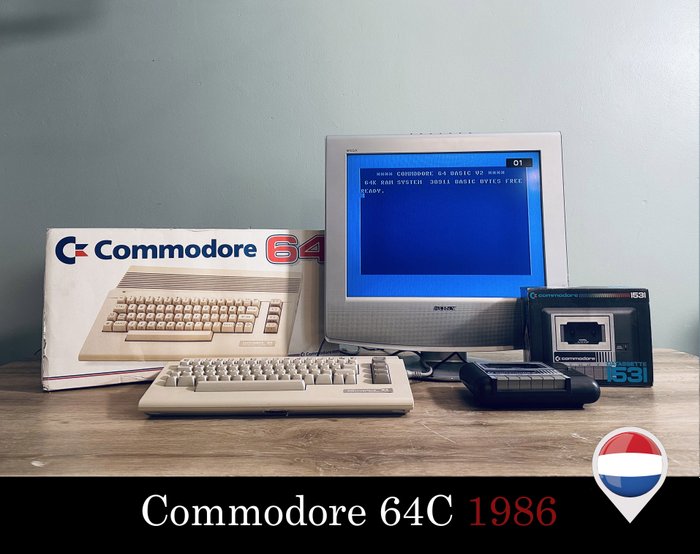
Commodore 64 + drives - Computer (5) - Nella scatola originale
N. 83329113

N. 83329113

The Commodore 64, the icon of retro computers. With a total of more than 22 million devices sold, is this the computer that many people will remember.
The Commodore 64C is the successor of the original brown box (breadbin). The whole line of Commodore was in this new style, like the C128. There are some small improvements on the IC’s compared to the original.
One of them is the SID chip (audio). Many people think the old one was better.
The Commodore 64C (or C64C for short) is a redesign of the successful Commodore 64. Due to the light color scheme and the slim case, it can be easily distinguished from the original C64 ("Breadbox"). The official name was C64C, although in Germany the magazine 64'er used the name C64 II, which continues to be used among German enthusiasts. There are no major hardware differences between the C64C and the original C64, and the units are largely identical in terms of graphics, sound, processor speed, interfaces and RAM size.
The C64C (aka C64-II) was the first C64 which featured a redesigned outer case, molded in a light beige color and made to resemble the C128, both in terms of design and color scheme. Because it reuses the same keyboard as the original C64 (albeit with recolored keycaps to match the new case), it does not have a numeric keypad like the C128.
During the C64C's production, Commodore made subtle changes to the case design in order to reduce production costs. Some later C64Cs are held together solely with plastic clips (instead of three screws at the front and clips on the sides and rear) and very late C64Cs also have the "Commodore 64" badge on the lower right molded into the plastic.
CPU: MOS 6510 or 8500 ~ 1 MHz
Memory: 64 KByte RAM, with 38911 bytes free usable under BASIC
ROM: 20 KByte, divided into: ...
Graphic: VIC -II ...
Sound: SID 6581/8580 are used for sound generation with 3 independent voices over 8 octaves (~96 notes) or noises with filter.
Keyboard: 66 keys (QWERTY), with multiple chars
Others: 2 interface-chips CIA -6526 for I/O-control
Come fare acquisti su Catawiki
1. Scopri oggetti speciali
2. Fai l’offerta più alta
3. Paga in tutta sicurezza